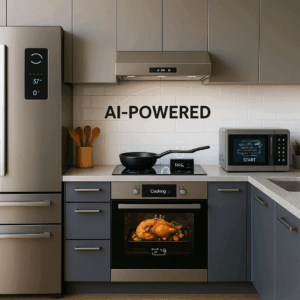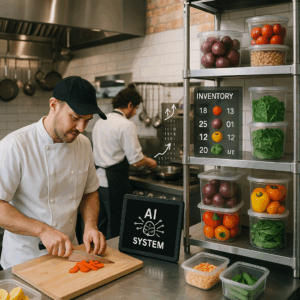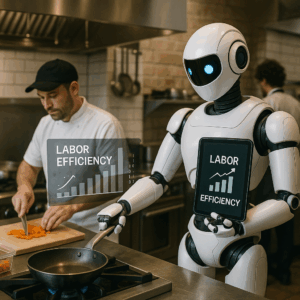Revolutionizing Restaurant Operations with AI Automation
- Phone: +1(833)PHX-Geek
- 712 H St NE Suite 1904 Washington, D.C. 20002
Are you looking to come to Toast POS? Follow this link to sign up and get a free quote from your local Toast Rep. They will come out to your restaurant, and give you a free, no obligation quote.
Introduction
The integration of AI automation technologies into kitchen operations can significantly reduce manual labor and streamline processes. By employing smart kitchen appliances and robotic systems, restaurants can enhance food preparation efficiency, ensuring quicker service and consistent quality. This technological revolution allows chefs to focus on creativity and culinary excellence rather than repetitive tasks.
Moreover, AI systems can analyze cooking patterns and optimize workflows. For instance, machine learning algorithms can predict peak hours, allowing kitchen staff to prepare meals in anticipation, thus minimizing wait times for customers. This proactive approach not only enhances customer satisfaction but also boosts overall productivity. 
In addition, AI can assist in maintaining food safety standards. Automated monitoring systems can track temperatures and times, ensuring that food is stored and cooked correctly. This reduces the risk of foodborne illnesses and enhances the restaurant's reputation for quality and safety.
Delivering exceptional customer experiences is crucial for any restaurant's success. AI technologies can help achieve this by personalizing interactions and streamlining service. For example, AI-driven chatbots can handle reservations and inquiries, allowing staff to dedicate more time to in-person interactions.
Furthermore, AI can analyze customer preferences and behavior, enabling restaurants to tailor their offerings and promotions. By understanding what dishes are popular among customers, restaurants can optimize their menus and create targeted marketing campaigns, enhancing customer loyalty and satisfaction.
Digital ordering systems powered by AI can also facilitate a seamless dining experience. These systems can suggest dishes based on previous orders or dietary preferences, making it easier for customers to choose meals. This level of personalization not only enhances satisfaction but also encourages repeat visits and positive reviews.
Effective inventory management is vital for restaurants to minimize waste and reduce costs. AI automation technologies can transform how restaurants track and manage their inventory. By using predictive analytics, these systems can forecast demand based on various factors such as seasonality and customer trends, ensuring that restaurants maintain optimal stock levels.
 Additionally, AI can automate the ordering process, alerting management when stock levels are low and suggesting reorder quantities. This reduces the risk of overstocking or running out of essential ingredients, both of which can negatively impact service and profitability.
Additionally, AI can automate the ordering process, alerting management when stock levels are low and suggesting reorder quantities. This reduces the risk of overstocking or running out of essential ingredients, both of which can negatively impact service and profitability.
Implementing AI-driven inventory management solutions can also lead to better supplier negotiations. By analyzing purchasing data, restaurants can identify the best times to buy ingredients at the lowest prices, enabling significant cost savings over time.
Labor costs are one of the most significant expenditures for restaurants. By adopting AI automation technologies, restaurants can streamline staffing needs and reduce these costs. For instance, robotic systems can assist with food preparation, allowing kitchens to operate efficiently with fewer staff members.
Automation also allows for more precise scheduling based on predictive analytics. AI can analyze historical data to determine optimal staffing levels, reducing the likelihood of overstaffing during slow periods or understaffing during busy times, thereby ensuring that labor costs are aligned with revenue.
Moreover, AI-driven training solutions can provide staff with the necessary skills to operate new technologies, enhancing their efficiency and effectiveness. This continuous learning approach not only reduces training time but also fosters a culture of innovation within the restaurant. 
Conclusion
The adoption of AI automation technologies presents a transformative opportunity for restaurants to streamline processes, enhance customer experiences, and reduce costs. As the industry continues to evolve, embracing these innovations will be crucial for staying competitive and meeting the demands of modern consumers.